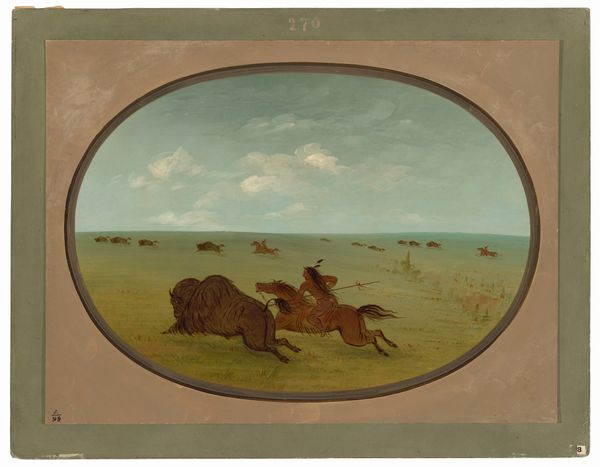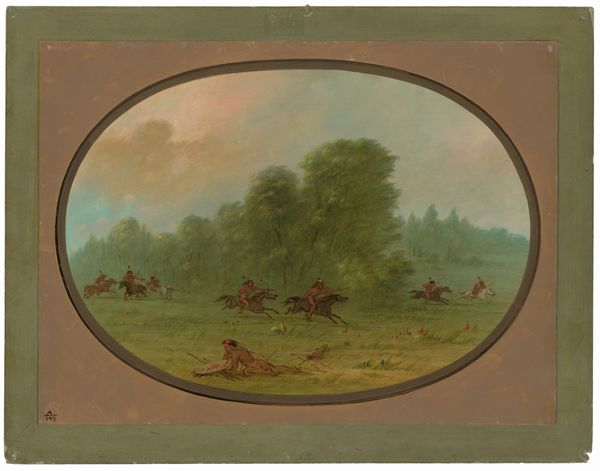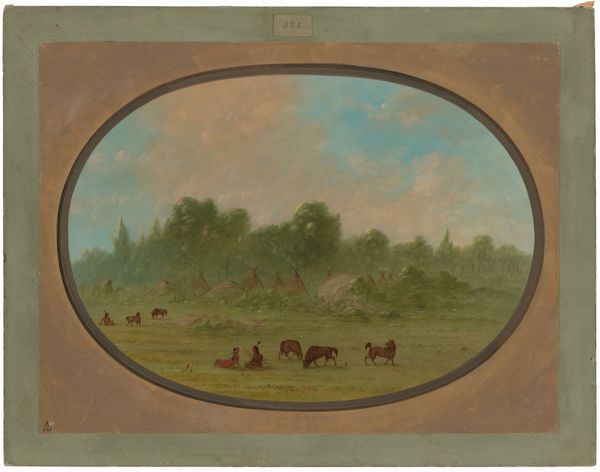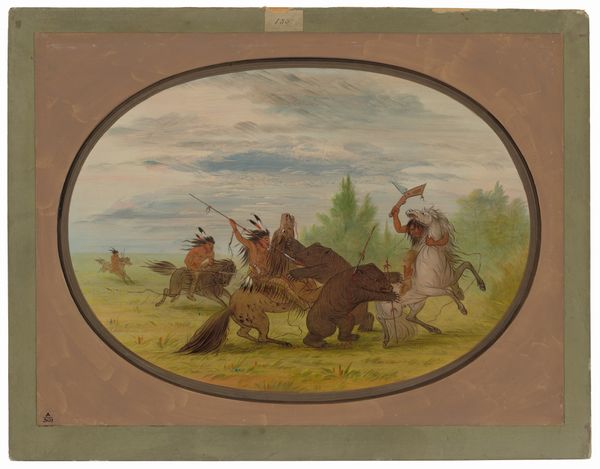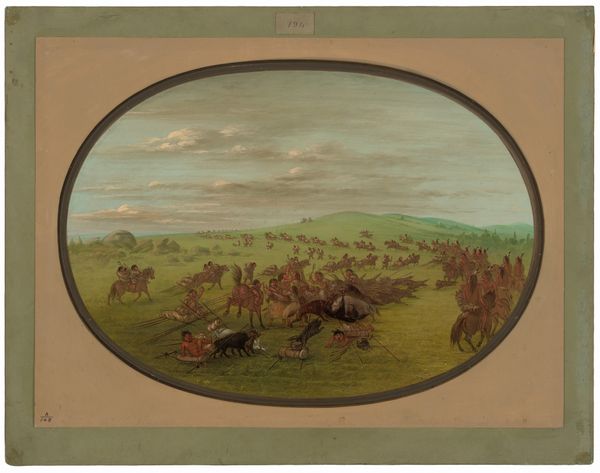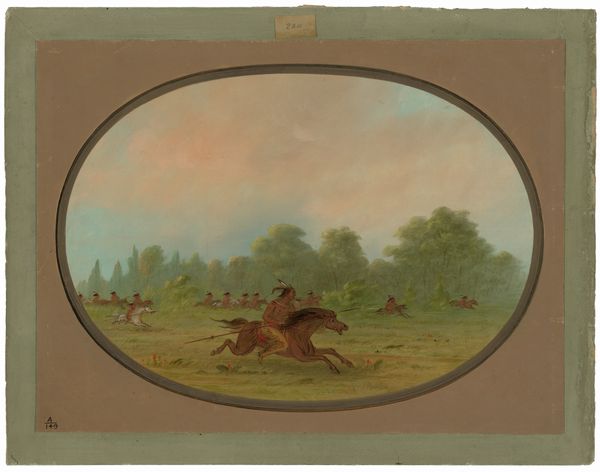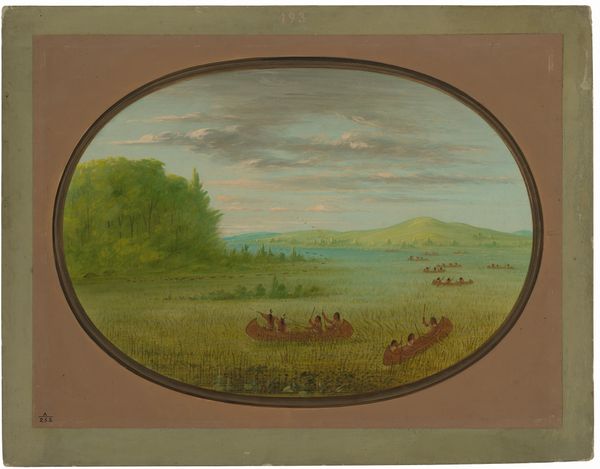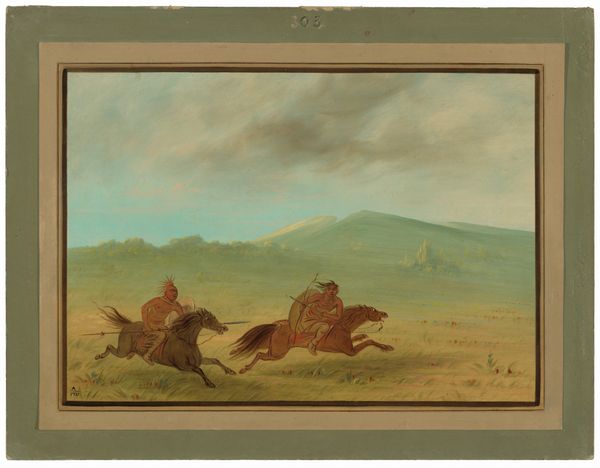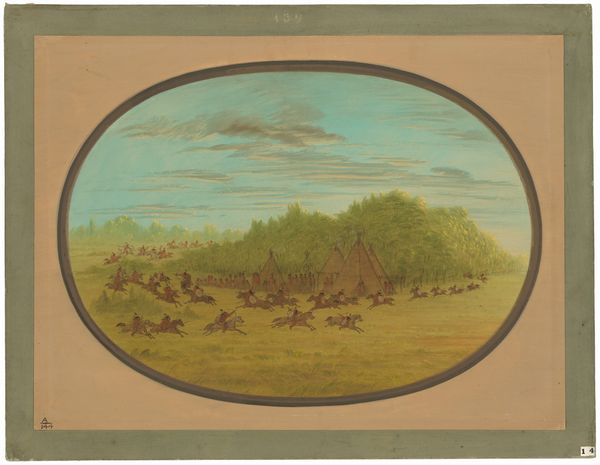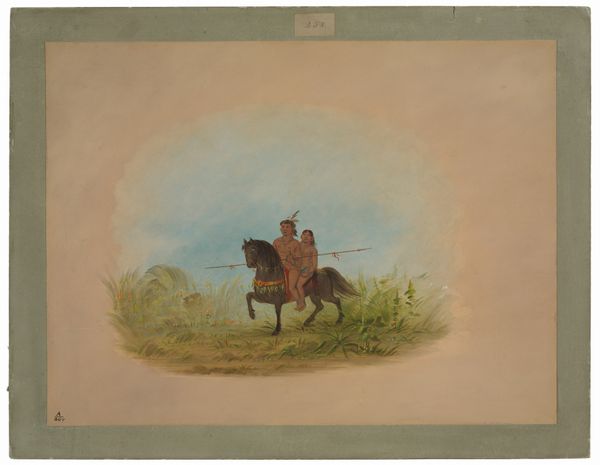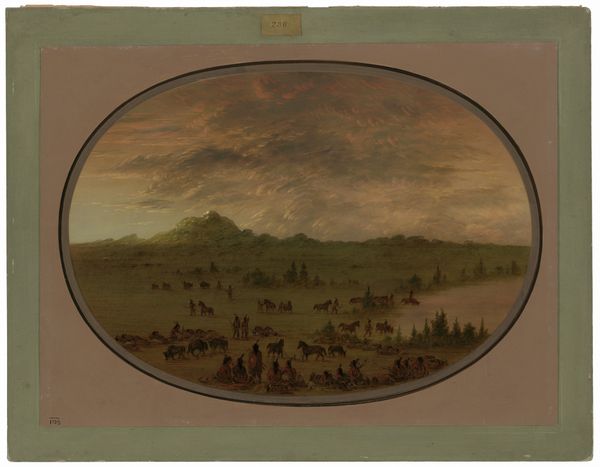
painting, gouache
#
water colours
#
narrative-art
#
painting
#
gouache
#
landscape
#
figuration
#
coloured pencil
#
watercolor
Dimensions: overall: 46.1 x 62.1 cm (18 1/8 x 24 7/16 in.)
Copyright: National Gallery of Art: CC0 1.0
Curator: Look at this fascinating watercolor from sometime between 1861 and 1869 by George Catlin. It’s titled “The Scalper Scalped – Pawnees and Cheyennes.” What’s your first reaction? Editor: The initial impression is one of dynamism and raw energy. The horizontal composition really emphasizes the movement of the horses and figures across the plain. The washes of color give it an immediacy that feels very direct. Curator: Catlin dedicated much of his life to documenting Native American life and customs, producing countless paintings and writings. What's compelling here is the title itself—"The Scalper Scalped"—hinting at a reversal of typical narratives about westward expansion. Editor: Right, that reversal is powerful, especially given the choice of watercolor. It wasn’t always considered a 'serious' medium. Was he, in a way, democratizing the historical narrative by using this accessible material? Almost challenging the heroic oil paintings popular at the time. Curator: I think that’s a fair point. Catlin presented these images to a broad audience, touring his "Indian Gallery" extensively. This allowed diverse populations to witness his romantic yet fraught vision of the American West. The watercolours provided visual arguments during debates on federal Indian policy. Editor: Let’s not forget the material realities of creating art on the move. The accessibility and portability of watercolor were crucial for someone working remotely, documenting a disappearing way of life. It’s not just the subject; the medium itself tells a story of mobility and necessity. How else could he quickly capture these scenes as a firsthand observer? Curator: Exactly. While his romantic lens undoubtedly shaped his portrayals, and some might find fault with its potential exoticism, it's important to remember Catlin worked in a context of rampant misrepresentation. This piece aimed to portray complex dynamics of intertribal conflict within a historical narrative increasingly determined by governmental authority and territorial disputes. Editor: I agree, thinking about it now, his watercolors give a sense of almost…documentary fragility to the history, in contrast with the oil painting which have historically represented the conquering side of similar events. A poignant contrast to remember.
Comments
No comments
Be the first to comment and join the conversation on the ultimate creative platform.

